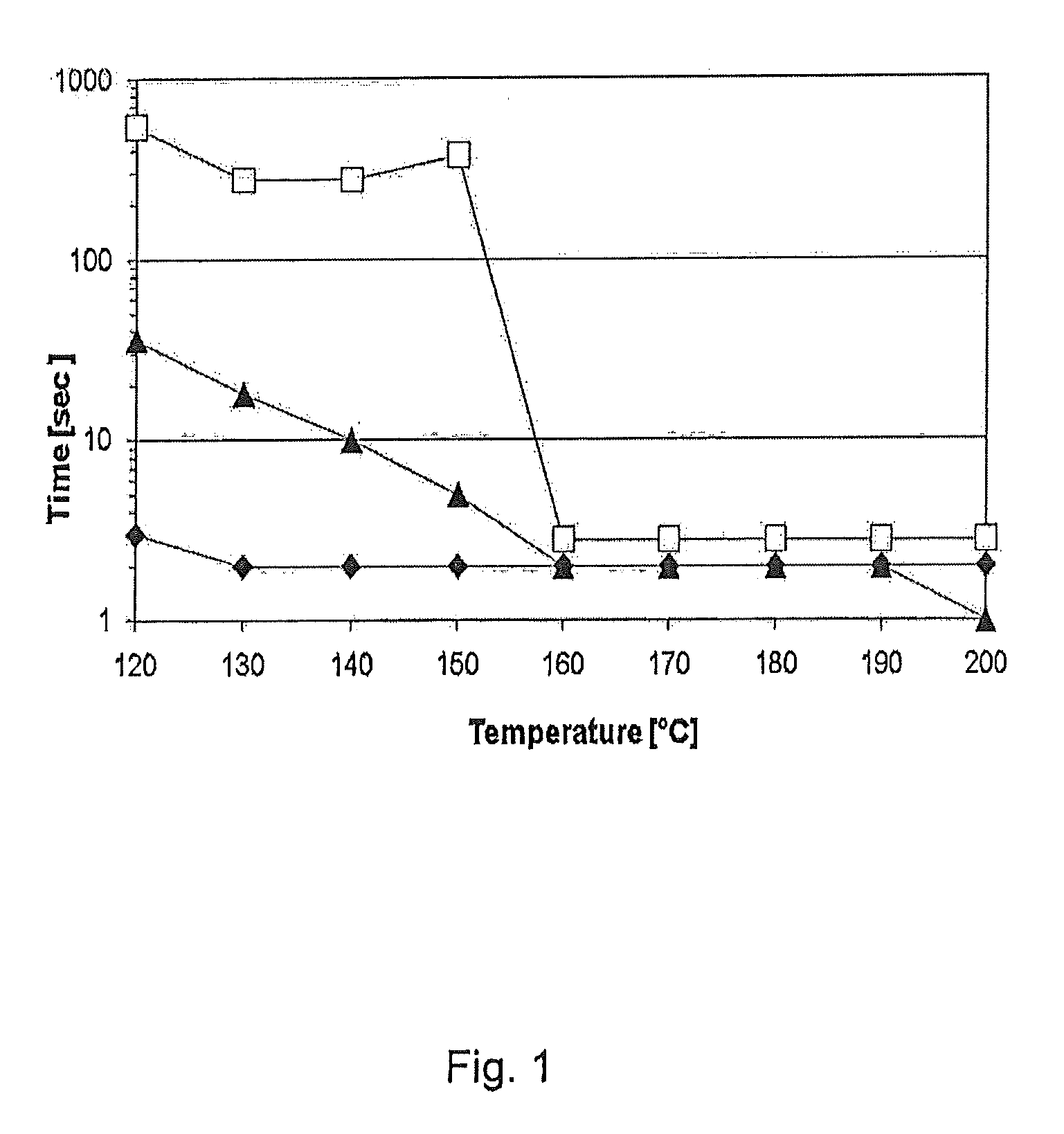Compositions comprising alkylalkoxysulfonates for the production of high temperature stable foams
- Summary
- Abstract
- Description
- Claims
- Application Information
AI Technical Summary
Benefits of technology
Problems solved by technology
Method used
Image
Examples
example 1
Foam Formation up to 200° C.
[0131]An autoclave with windows on the front and on the backside was used to observe foam-ability, foam structure and foam stability as function of temperature and time by a video camera. The temperature was adjusted by electrical heating units. Pictures and short videos were taken for documentation. Nitrogen was used to apply a maximum pressure of 80 bar for keeping the solution liquid. Foam was created by nitrogen injection into the aqueous surfactant solution (50 ml), which was stirred mechanically (1300 rpm). The concentration of the surfactant was 1 g / l. A frit with 2 μm pore size was placed at the end of the injection tube to create small air bubbles. After nitrogen injection stirring was stopped and foam stability was detected.
[0132]At different temperatures up to 200° C. the time was notified when the first indication of foam collapse was visible (see y-axis of FIG. 1).
[0133]FIG. 1 shows the time t in sec, when the first foam collapse was visible ...
example 2
Foam Formation at 250° C.
[0140]At a temperature of 250° C. the sodium salts of linear C24 / 26-polyethoxy-sulfonates with different numbers of ethoxy units (EO) and at different concentrations of potassium chloride (KCl) were compared by their foaming behaviour. The foams were created in the same way as described in example 1. The foam stability (time before the foam starts to collapse) was determined as described in example 1. The concentration of the surfactant was 1 g / l. The results are shown in Table 1.
TABLE 1Start of foam collapse at 250° C.KCl [g / l]05102050Start of foam collapse [sec]C24 / 26 0EO00000C24 / 26 2EO20110184216108C24 / 26 4EO4011020013090C24 / 26 6EO134125224202—C24 / 26 8EO22426054——
[0141]As can be seen from the results in Table 1, the foam stability depends on the number of ethoxy units (EO number). The addition of salt may shield the charge of the anionic sulfonate groups which results in a tighter packing at the air / water interface. lit can be predicted that foam stabilit...
example 3
Influence of Alkyl Chain Length on Foam Stability
[0143]The foam stability of foams comprising alkylalkoxy-sulfonates with different alkyl chain length was determined at temperatures in the range of 200 to 250° C. as described in Example 2, wherein the concentration of the surfactant was 1 g / l. The results were summarized in Table 2.
TABLE 2Start of foam collapse at 200° C. and 250° C.Temperature [° C.]200250Start of foam collapseSurfactant[sec]C16 / 18-4PO-2EO-S03Na1352C22-2EO-S03Na3003C24 / 26-2EO-S03Na30025
[0144]It was found that foam stability increases with increasing alkyl chain length of the surfactant.
PUM
| Property | Measurement | Unit |
|---|---|---|
| Temperature | aaaaa | aaaaa |
| Temperature | aaaaa | aaaaa |
| Temperature | aaaaa | aaaaa |
Abstract
Description
Claims
Application Information
 Login to View More
Login to View More - R&D
- Intellectual Property
- Life Sciences
- Materials
- Tech Scout
- Unparalleled Data Quality
- Higher Quality Content
- 60% Fewer Hallucinations
Browse by: Latest US Patents, China's latest patents, Technical Efficacy Thesaurus, Application Domain, Technology Topic, Popular Technical Reports.
© 2025 PatSnap. All rights reserved.Legal|Privacy policy|Modern Slavery Act Transparency Statement|Sitemap|About US| Contact US: help@patsnap.com



